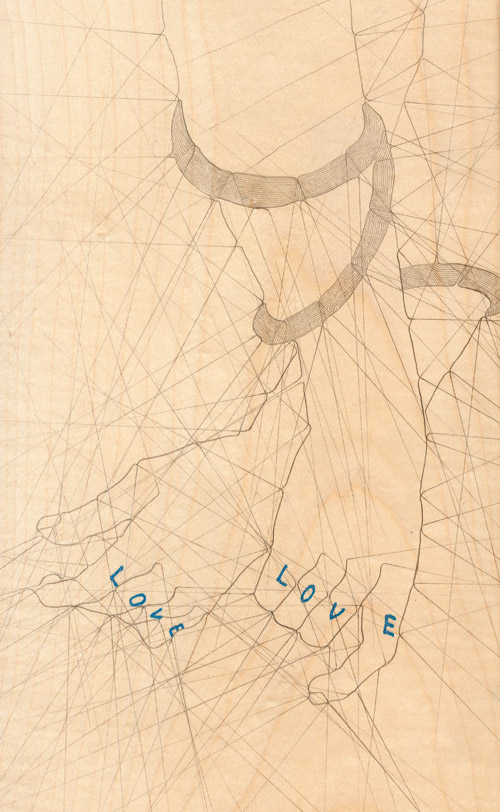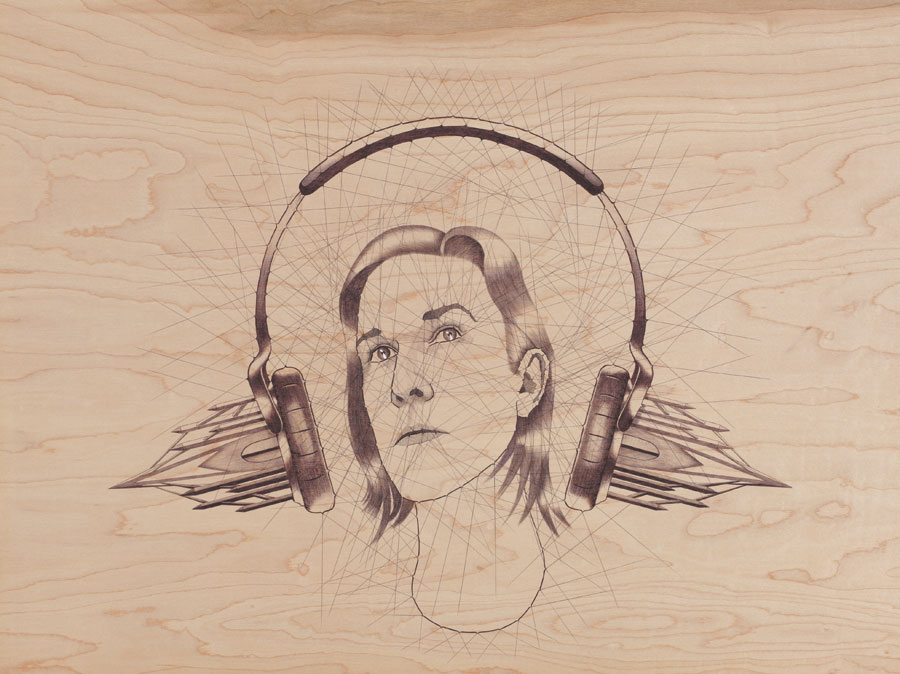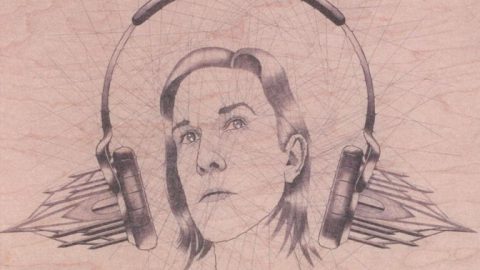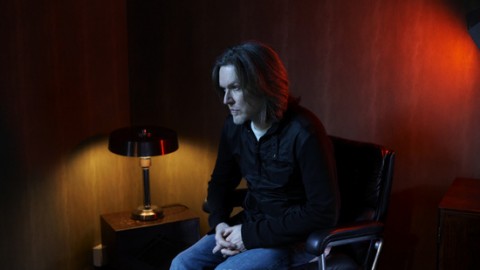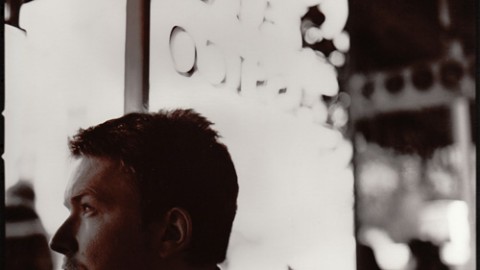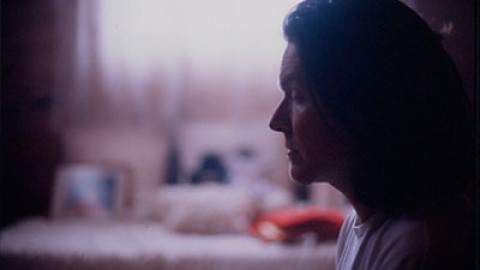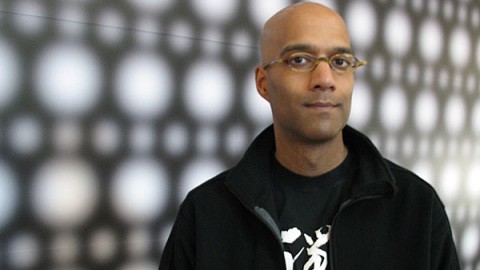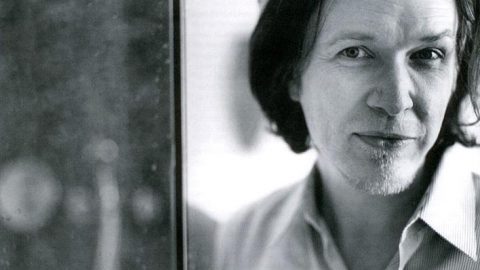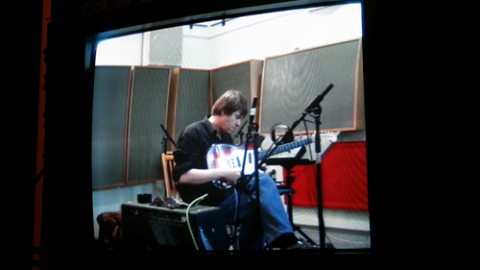As published on the official website.
ERIK HONORÉ & JAN BANG
First, we would like to say what a joy it has been to work on an album that is in large parts based on variations on Manafon—undoubtedly one of the most significant records of the past decade.
The Manafon album was so rewarding because of its originality and sparse soundscapes, and for the combination of “free improvisers” and David’s powerful and structured vocals and lyrics. So when we were asked to work with tracks from the Manafon album, we chose to use few elements from that album (mainly only the vocals). Those arrangements were already done perfectly, and we felt that the most respectful thing to do was to try to take the material in a different direction.
Also, six of the twelve tracks on the Died in the Wool are new compositions, so perhaps it is correct to regard the album as a sister project to Manafon, more than a remix record. This also influenced how we worked with the material, since three of the five tracks we contributed to were new compositions. David didn’t point out any specific direction with the material handed to us other than that what he had in mind was a “percussion-less album.” Here are a few comments about the songs we worked on:
Regarding the track “Died in the Wool”; it was interesting to listen to Dai’s very strong clarinet arrangement, and then to try to expand on that. We used samples from a live remix done at thePunkt Festival that we curate in Kristiansand, Norway, where the concept is to immediately remix all of the main stage concerts. Everything at the festival is recorded, so there are a lot of small gems available—samples and solo performances and whole ensemble recordings. In the case of “Died in the Wool”, the otherwise quite “floating” track asked to be grounded in a few places, and there the treated cello/bass samples from a Skúli Sverrisson concert at Punkt seemed to work well.
On a track like “Manafon,” we approached it like we often do when we produce or arrange music together: working intuitively and in quite an improvisatory manner with samples and synthesizers and programming, building a new arrangement around the vocal track, layer by layer. The basic sound and structure often appears quite quickly when we work like this, followed by a period of editing and focus on detail.
On “A Certain Slant of Light,” we used samples of trumpeter Arve Henriksen extensively on the second part of the song. These were taken from a live performance, resampled and improvised onto the track by Jan.
“I Should Not Dare” includes vocals and a guitar part by David himself in addition to a guitar overdub by Christian Fennesz. The rest of the arrangement was created here in Kristiansand, including a sample of Norwegian keyboardist Ståle Storløkken (Supersilent) taken from a live performance at the Moers Festival in Germany.
“Emily Dickinson,” from the Manafon album was re-arranged by Jan using small samples of woodwinds, strings and brass combined with more electronic samples.
A very important input from David was his choice of musicians for the album, and his assigning the different tracks to different musicians. [David chooses] musicians and arrangers who seem to blend very well together, and to expand on each other’s ideas in an organic way. There seems to be a kinship of sorts, despite the very different backgrounds of the people involved, both musically and geographically.
Also, David was the one who made the final decisions as to where to use our input, whether in the form of whole new arrangements (on “A Certain Slant of Light,” “Emily Dickinson,” and “Manafon”), and where to use our input more as instruments, in combination with or as additions to other musicians’ arrangements (on “Died in the Wool” and “I Should Not Dare”).
When listening to the album as a whole, it’s a project that we feel very privileged to be a part of. It takes the material into some new territories, it sounds fresh and adventurous—and still it points to both the sparse soundscapes of Blemish and Manafon and to the lushness of David’s earlier work.
DAI FUJIKURA
Tell me how you first discovered David’s work. — I grew up listening to his music—which is a bit strange, as I was born in 1977. The first album I listened to was Secrets of the Beehive. At that time I was 13 years old or so, and I hadn’t listened to pop music—well, maybe I’d heard it on TV, but I’d never purchased it nor was I interested in any music other than classical. Being a classical musician was my life from the age of five! Practicing every day, doing homework, going to “juku,” which was a sort of “extra school” that lots of kids in my generation attended. So, I had no time to waste, and no time to search in other genres of music.
Secrets of the Beehive, as you know, uses classical instrumentation, so when I first heard the album, it was so easy for me to get into. I’ve bought this album four times in my life, to give to people as gifts. I think David owes me a pint of beer! But the main reason I was hooked by his work was, of course, his voice. The most beautiful voice in the world. I just love that voice. And also I appreciated his ear for instrumentation, which is very good. To prove that, Gone to Earthdoesn’t really sound dated when compared to the popular glitch electronica of today, it is much juicier and richer. Then three years ago, I asked the South Bank Centre if I could meet or possibly collaborate with David. They were surprised that I knew or was interested in music from the pop world, and that I wished to collaborate, as I have never collaborated with any other music creator. And then it happened that David and his office were planning to have a meeting with them near that time! The first time I met him was in this meeting. Since then we’ve exchanged vast amount of emails and also spent time together either in London or in New York.
What drew you to his music and led you to seek him out as a collaborator? — Very simple, his fantastic voice. I wanted to write music for that voice!
What were your expectations? — I didn’t expect it to be this close and “dramatic” a friend/working relationship! I know that a lot of famous musicians talk about what close friends they are etc., but actually they aren’t. But between he and I (obviously I am not famous, but he is), we are very close friends. We have big arguments from time to time, but that is the proof of being close friends!
Have you worked with song forms or even with singers before (as a composer, a performer, playing guitar in a high school punk band, etc.)? Did your past experiences inform this collaboration, or was working on a piece like “Five Lines” a new situation for you? — As a classical composer, I’ve never collaborated. I don’t collaborate. I write everything, every note, and even write text, to explain how the musician should play my music precisely (sometimes saying where to “turn the page”!).
Also in classical music, the vocal line is just another instrument. With a string quartet and vocal, that means the vocal presence is just a fifth member of the ensemble, nothing more. So this is a very different experience for me.
Initially, I wrote “Five Lines” for string quartet and vocal line (imagining David’s voice), then we recorded the string parts with the International Contemporary Ensemble (ICE), which has played my music in concert many times. David liked the string part but not the vocal line, so he composed a new vocal line and wrote the lyrics, and recorded it.
I remember when he first let me hear the new version, he warned me that I might hate it, that I would think it makes no sense musically, etc. etc. I told him “C’mon, just play it!”, and then I really loved it. It works much better than how I imagined it, or with the vocal line I initially wrote.
I thought, this is a really unique collaboration, because I am doing my own thing, writing music the way I would write my own concert music, and I have the contemporary ensemble I’ve worked with many times, then David composed his music to it, and it just worked … “we” naturally met.
This may not be so unique if we were both pop musicians, but we are from, and we live in totally opposite parts of the musical globe. So this was collaboration in every sense, and not collision.
There are many examples where a composer orchestrates a song for a pop singer, but you guys are really trying something different—David has been moving away from traditional song forms, and you clearly aren’t trying simply to embellish the vocal line. — Oh I would never do that! I want to disturb David’s voice (I am half joking). With love, of course!
Seriously though, I am not an orchestrator for him. As I said above, in classical music, we don’t separate the vocal and instrumental parts of the music, so from my end, I never treated my work with David as just arranging a background sound/music. Definitely it wasn’t a side job for me.
“The Last Days of December” is a great example: hearing the drone-based composition against a more traditional melody is really intriguing. They complement each other, but not in an obvious way. Could you tell me more about the process of writing that piece?— With this piece, from my experience of “Five Lines,” I thought I should just give David materials, a simple series of chords played in a very strange way, and not think about his vocal line. That’s his job! But also I thought I should give him more than the “necessary materials,” so that he can eliminate things to create the track he wants.
I say “simple chords,” but I derived the chords from the multiphonics of the bass flute. As I am not an improviser, when I write multiphonics in my compositions, I expect exact multiphonics with particular pitches. I even write the fingering of the instrument to get those multiphonics. So I knew which particular pitches I was going to get out of the bass flute multiphonics, and I developed the harmony from that for strings. They sustain the chords, but slowly they change the dynamics and also sonority, going from smooth playing to bowing near the bridge (molto sul ponticello). It sounds as if you are increasing the level of compression, but we are doing it acoustically.
ICE is particularly good at performing these kinds of extended techniques, as they specialize in contemporary music. If you get normal session musicians, they won’t be able to achieve these techniques.
Could you tell me about the clarinet samples that are the basis for “Died in the Wool”? — I was working in an experimental studio in Freiburg, Germany on a new piece for Donaueschingen Musiktage 2009, called “Phantom Splinter.” For that I recorded my friend playing clarinet multiphonics as I was experimenting with the sound, working out how I could create an interesting live electronics patch for this piece. Then from this experiment I sent a short .mp3 to David. (It was just an experiment of that day and this part was not used in “Phantom Splinter” in the end.) He liked it very much, and wanted to develop it into a song. So I went home and re-composed/re-constructed this material from scratch then sent it to him (David liked this even better).
He developed this track into something vast from simple seeds which I initially created. I’m impressed with what he has done with it.
As you can imagine, David and I, we email each other almost every day (sometimes six emails a day). We talk about everything from movies to everyday life. So I sent him the mp3, not asking him to do anything, but just like I was sending him a postcard from South Germany, to say “How are you?”
You also spent quite a bit of time reworking material from Manafon. How did you approach each song? — [When David and I started working together], I was invited to write some string parts for the Manafon album. So I wrote and we recorded the string parts for “Random Acts of Senseless Violence,” “Five Lines,” and some other work.
David went home with the materials, then one month later he told me the strings [for theManafon tracks] didn’t work, so he had to eliminate what I did. Now, I had never collaborated musically with anyone before, so this was a shock. Nobody has eliminated anything I’ve written.
Then a few months had passed, and I was still not sure how the parts didn’t work. I asked him, “Can I have a go?” He was so generous, he just gave me the whole ProTools sessions and I began to make remixes with my string parts. So basically I was just remixing for me, for my living room to hear, not to release any of these tracks.
I sent him the draft mixes, and he emailed me, “Well done, it works!” (In my heart I thought: “Of course they work! I wrote them to work!” [Laughs]). But I also think he thought the strings didn’t work for the overall feel of the Manafon album, but as a single track, they work. So [“Random Acts of Senseless Violence”] was only released in Japan as a bonus track.
Many people told me they liked my mix, and some said they wanted to hear the whole album with my mix. I passed that idea to David, and he liked it, so we started working on other tracks.
From your answers and from the nature of your job as a composer, I can tell that you’re someone who knows exactly what he wants from a piece. David is also this way. — Well, very much so, but in a very different way. As a classical composer, one must write down everything before one hears a note, so I must know exactly what I might want in the session, before I hear a sound. David knows exactly what he doesn’t want when he hears it. It’s like an extreme filter, he knows very well what he doesn’t want for any given project. This is purely what I think when I am working with him (so he probably disagrees).
Has it been challenging to work together and to come to agreement on these pieces? — For me the biggest challenge was how to let him “hear” the music I am writing for his tracks, because he doesn’t read music, so I can’t just pass on the score I write. Maybe this is normal in the pop world, but for me it was quite a challenge. There is no point in recording something totally unusable, because after all this is his album.
DAVID SYLVIAN
On this album, you could have gone with a number of collaborators, as you did on Money for All and the Blemish remixes. Here, you went for much greater continuity by working principally with Dai, Jan, and Erik. Am I right that this album is more of a piece than your other remix albums? What was the thought behind that? — I actually had no plan to work on a remix of the Manafon material. Some might be surprised to hear that I foundManafon a far more emotionally exhausting album to produce than Blemish. I didn’t have it in me to return to the material after completing it plus, I felt the work wouldn’t benefit from the same approach we’d taken on The Good Son vs The Only Daughter. Died in the Wool came about in an incremental fashion. Wheels were unintentionally put into motion whilst I was still working on Manafon. I’d met Dai in London, where he’d expressed a desire to work together. We’d continued an in-depth conversation via email regarding potential future projects. At some point it seemed like a good idea to test the water to see if we were speaking the same language.
I sent Dai a couple of tracks from Manafon for him to orchestrate. He’d already expressed a desire to re-work older material such as Blemish so I felt this might be the place to start. He also composed two new pieces for me to respond to. We set up the sessions in NYC with members of the ICE ensemble. Although the sessions went well I later came to feel that the orchestration was working against the minimal aesthetic embraced by much of Manafon, and so discarded it. Of the two original compositions, I only developed one, which evolved into “Five Lines” and later found a home on the Sleepwalkers compilation.
In the meantime Dai had asked to remix “Random Acts of Senseless Violence” with his orchestration in the manner in which he originally intended it. Once finished, he expressed a desire to do more of the same. I could find no objection so, with Manafon complete, I sent the entire album to him as multitrack files. We set up a second session in New York City, again with the ICE ensemble, and covered a fair amount of the material from Manafon plus one original composition which was to become “The Last Days of December.” In the meantime I’d been working on a track initiated by Dai consisting of a cluster of multiphonic clarinet samples. I’d augmented the work with samples taken from a variety of other sessions including performances by Keith Rowe, John Butcher, Eddie Prévost et al. This became “Died in the Wool.”
Inspired by a commission Christian Fennesz and I had received, I’d also been working on a series of songs based on the poems of Emily Dickinson. As Dai hadn’t tackled the entireManafon album I decided to send the tracks he’d omitted to Jan Bang to see what he’d make of them. Jan and I had been in close contact for a couple of years, and I felt his approach to remixing in general (he and Erik had produced wonderful remixes for me in the past) plus his delicately impressionistic way with texture and impressively manipulative sampling technique might work well on some of the pieces. We started with “I Should Not Dare,” the Dickinson poem that Christian and I had been commissioned to produce months earlier. Jan added some beautiful orchestral elements to our original arrangement. We then went on to a second poem and then finally tracks from Manafon itself. Jan brought Erik onboard and things appeared to fall into place very quickly. I completed the final mixes but Jan, Erik and Dai presented the work to me in fairly complete form so, with the exception of the new compositions, the final mixes more or less took care of themselves.
As I said, it wasn’t my intention to create a remix album, and I’m not sure that’s what we have with Died in the Wool, at least not in the traditional sense. That’s why I went with the term “variations,” as these appeared to be extensions or variations on a theme … utterly sympathetic to the original material, but at the same time working against it, in the same manner that I was working against the original spirit of the improvisations which acted as body and catalyst for the creation of Manafon.
Tell me more about “The Last Days of December.” How did you and Dai create this piece? — In a number of our exchanges regarding possible future directions in music we’d discussed the drone and its place in both classical and popular music, plus its continued presence in my own work. Dai was, and continues to be, interested in shifting the root of the drone, attempting to make the root somewhat ambiguous which should in a sense liberate the vocal melody. This can be heard in some respects in the title track. In any case, the drone was an ongoing part of our conversations, hence Dai’s interest in serving up something of this nature at the second session in New York. There is a bass flute playing multiphonics more or less throughout the entire piece which adds a disquieting harmonic element to the piece, and which haunts the vocal melody as it attempts to find its way through and around the resulting tonal density. The lyric itself reflects this haunting with ghosts of its own.
“Anomaly at Taw Head” is an outtake from Manafon. Could you tell me more about the making of this song? — I composed the piece during the same period that produced Manafon, but rather than being selected from any one session, it is entirely made up of unrelated component parts. None of the musicians were actually performing together (with the exception of one or two moments where sax and cello collide), nor was any one musician responding to another’s performance. It’s a case of composition via cut and paste. Nothing unusual in that as far as I’m concerned, but it wasn’t in keeping with the spirit of Manafon and so I omitted it from the album. Dai later added a string arrangement to the piece which aided a little in binding the elements together.
You’ve spoken before about the idea behind “When We Return You Won’t Recognize Us.” How did you decide to release it on CD? — All said and done it seemed to belong to this body of work. The process of creating the piece was informed by the Manafon sessions themselves, but went a step further by having a written text regarding the context of the installation and the concept behind it with specific references to sound, and by having Dai “improvise” with a sextet of string players. This was handled by settling on a handful of chord clusters prior to the session. Dai formulated a series of hand gestures that would indicate which combination of responses was required from the sextet at any given moment in time. I believe we recorded five takes total and each take was vastly different from the one prior. I did speak with the ensemble after each successive take to guide them towards, not a specific result—that would be impossible and would defeat the purpose of working in this manner—but a narrower, sonically and dynamically more-defined, field of inquiry.
I believe we did five takes in total that day. Everything fell into place for me on the fourth. There was a fair amount of editing in the mixing stages but nothing that detracted from the form the original improvisation had taken.
How did you deal with the challenge of capturing an installation on a stereo CD? — I was moving from the spaciousness of a 5.1 surround mix, which was how the audio was set up for the installation, to a stereo one. The composition should hold up either way so it was a matter of maintaining that sense of spaciousness regardless of limitations. I’ve been working in the realm of stereo all my life so this wasn’t a difficult transition to make, but whilst I was handling these adjustments I took the opportunity to edit the piece further, to improve on it by bringing in other elements from earlier takes, mainly very subtle additions which spoke to the natural dynamics of the piece and the intricate details of sound design.
I’m now in the process of remixing the work for an entirely fresh installation of the piece, which will be a feature of the Punkt Festival, Kristiansand, Norway 2011. The installation will include the added visual element of newly commissioned work by Atsushi Fukui and will be set up in such a way as to allow for individual musicians, poets and writers to interact with the audio element in live performance.
As you adopt more refined styles of contemporary music, what are you listening for, and what do you hope to evoke? Do you feel you’re even more detail-oriented than you have been in the past? — I don’t think I’ve produced work of a more intensely emotional nature that that of the past eight years or so. I never work from a purely intellectual standpoint, it’s the intuitive and the emotional that are my guides. Therefore all the elements you hear in the work are in the service of the emotional truth of a piece. Not to sweeten the bitter pill as much as more traditional musical elements might, but by fleshing out the picture via other means. Christian [Fennesz] talks openly about his work being emotional, even sentimental, and this is one of the reasons I was attracted to his take on these contemporary filtering systems. He’s not coming from a purely cerebral place in his approach to music. The impulse comes out of necessity, the heart, an emotional connectedness.
An analogy might be made with the work of the artist Anselm Kiefer, who throws earth, mud, and dust over his paintings. It’s a process of distressing the work to lend it distance (emotional but also as in time, memory and recall), de-prettify it, and remove sentiment, whilst adding another layer of substance, of evocation and of meaning. In a sense it obstructs the purity of the image, degrades it whilst increasing its power of evocation, just as a forgotten photograph that’s been allowed to yellow and fade with age accrues meaning over time, bringing it into a more personalized dialogue with powers of perception and recollection due to the gaps in, or the absence of, visual information.
I don’t feel more detail-oriented than in the past. I’ve always had an obsessive attention to detail, but the sonic palette has broadened somewhat. A greater range of influences impose themselves upon generations of composers from a diverse range of media. I think there’s a cross-discipline conversation going on that’s very healthy.
For many years, even going back to my youth, I’ve heard environmental sound and pure noise as part of my musical environment, my resources. In the past these elements were brought into the sound design of the works in quite a subtle manner but they were present nonetheless. A closer listen to Brilliant Trees and Plight and Premonition will certainly confirm this. But as we evolve, we go in search of ever more evocative elements, free from a certain cultural baggage and/or association, that begin to add up to a personal vocabulary of sorts in much the same way as we up-root language, attempting to bend it to our will. Times change and we need to recognize and comprehend what loses real currency in contemporary culture and what remains. What has the power to replace that which is lost to us? I’m not talking about work which is purely popular but that speaks with an incontestable contemporaneous voice.
Original article on davidsylvian.com
